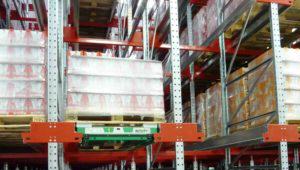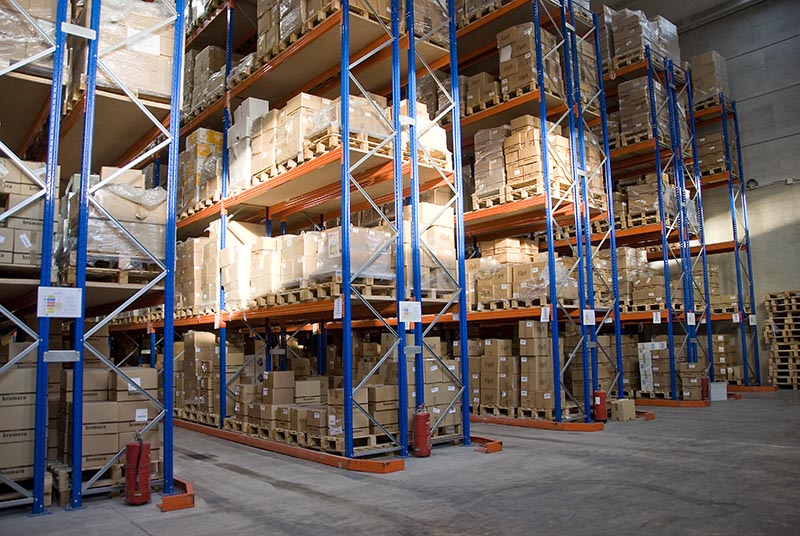Add Rails and Hangers to Cantilever Rack for Garment Storage
An alternative to wire decking is to add rails across the cantilever arms to support garment hangers. This can be a high-density, heavier-duty solution for hanging apparel in industrial type environments such as found in e-commerce storage and distribution.
In this solution, the cantilever arms are set up the same way as with the wire deck. The rails are secured to the arms for the secure storage of apparel.
Design A Cantilever System to Support Your Inventory
There are four characteristics to consider ensuring a cantilever system can accommodate your inventory:
- Depth
- Height
- Length
- Width
These four inventory characteristics determine the correct number, length, and spacing of cantilever arms needed in a system. For example, if the cantilever arms are spaced too far apart, the wire deck or rails will deflect. This deflection may lead to damage to your inventory as well as the system. Adding more arms into the system can avoid any deflection from occurring.
Once the number of arms is determined, you can then calculate the capacity of the system. Each arm will support an equal amount of weight in a properly designed system. The arm capacity can be calculated by dividing the load weight by the number of arms required.
Learn More
To read more e-commerce storage solutions visit REB’s e-commerce industry page.
Let’s Connect
REB has been providing material handling systems to the warehousing and distribution industry since 1962. We understand that your storage system should maximize efficiency. Our team of engineers specializes in evaluating and designing a storage system based on your specific inventory characteristics, giving you a system that optimizes your operation.
Fill out the ‘Submit Your Inquiry’ form to get in touch with one of our industry experts who can answer any questions you may have regarding cantilever rack wire decking applications.


